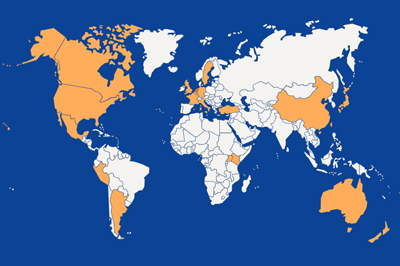Changes in social safety, competence perception and depressive feelings of elementary school children participating in the Rock and Water intervention program: a comparison study.
Reitz, E., Mertens, E.C.A., Van London, M., Deković, M. (2019), Journal of Clinical Psychology 49(1): 38-57.
A total of 1203 primary school students between 7 and 14 years old (corresponding to grades 6, 7 and 8) participated in the study; they were from 17 schools randomly assigned by an independent notary to either the intervention group (66.67% probability) or the control group (33.33% probability). The study conducted by Utrecht University used the research tools of the National Anti-Bullying Program Survey that was completed in early 2019. The research findings show that use of Rock and Water leads to significant, positive results. Students in the Rock and Water group reported a decrease in two forms of bullying, all forms of being bullied, increases in overall self-confidence and self-regulation and social acceptance and a decrease in depressive feelings. When differences between the intervention group and control group in change over time were examined, they were found to differ on two forms of bullying (being physically bullied, bullying “other”), on self-regulation and self-esteem, and on depressive feelings. Students who had taken R&W reported stronger improvements than those in the control group. The research report was reviewed and subjected to double-blind peer review to establish scientific quality. After obtaining approval, publication followed in the scientific journal “Journal of Clinical Psychology” under the title, “Changes in social safety, competence perception and depressive feelings of elementary school children participating in the Rots and Water intervention program: a comparison study.
Additional analyses that looked specifically at the extra vulnerable child revealed that these children in the R&W condition benefit similarly or even more (a sharper downward or upward trend compared to the other children). In addition, the RWI also asked teachers some questions about bullying behavior in the classroom. The teachers whose students had attended R&W reported greater improvements than those whose students were in the control group regarding the number of students who were bullied (victims) and the frequency of bullying. Despite the fact that a simple questionnaire was used in this study, it is important to emphasize that teachers’ perceptions are consistent with the self-reports of primary school children, which validates the results of both studies mentioned above. Teacher outcomes are described in a separate research report, “The Effect of Rock and Water in Primary Education on Bullying: from the Group Teacher’s Perspective.
Click here for the additional report on change trajectories of the vulnerable student.
Click here for the article on teacher reports.

